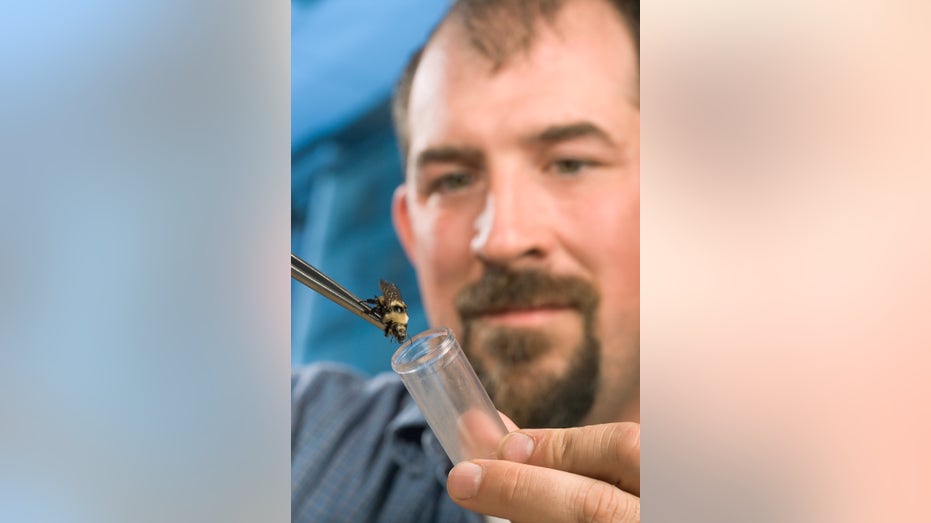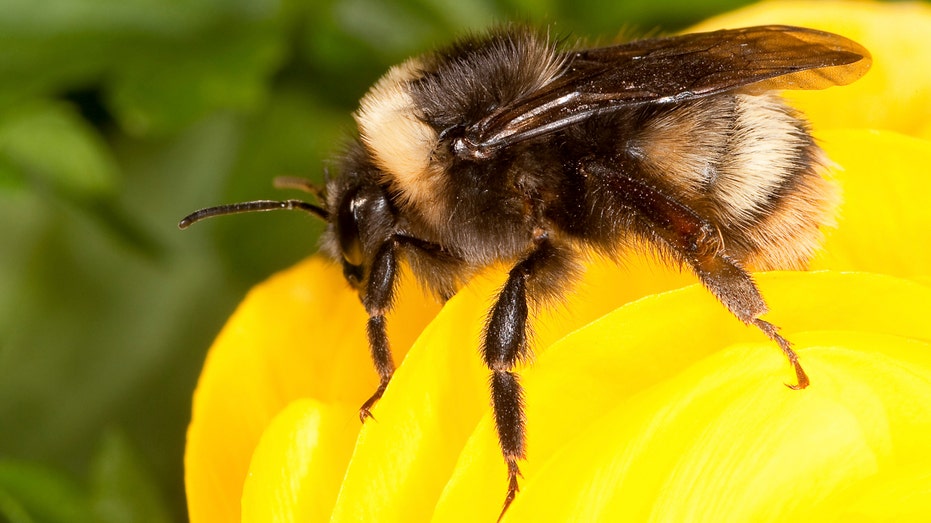Bumblebees Are Dying Out: Here's Why It's Important

Who would have thought a creature so small could have such a huge impact on the world?
Well, thank the bees.
"They are very important – they provide a pollination service for one third of the food that we eat," Andrew Cote, founder of the New York City Beekeepers Association, tells FOXBusiness.com. "Everyone's plate is as it is, in a large part, thanks to the honeybee."
Cote runs nearly 100 beehives in New York City and has made beekeeping his life for 35 years. But the insects he loves are facing a tough reality.
"I see the bees as the canary in the coal mine for our environment," says Cote.
The rusty patched bumble bee has made some unfortunate history — becoming the first bee proposed to be listed on the endangered species list in the continental U.S.
Most people associate bees with honey, but the agriculture industry owes a lot to these little yellow and black insects; they account for roughly 35% of global food production, according to a White House fact sheet.
"Bumblebees are important pollinators of a lot of crops," Georgia Parham, spokesperson for the U.S. Fish and Wildlife Service, tells FOXBusiness.com. "And, there’s concern that there could be an impact to crops and food sources."
Once an abundant species in the 1990s, Parham says rusty patched bumble bee populations have drastically plummeted in a short time. This has brought up new concerns and questions regarding whether other bee species will follow.
These questions have rightfully arisen, considering the fact that pollinators represent more than $24 billion to the U.S. economy, according to a White House fact sheet.

Climate change, mites, pesticides and genetically modified crops have all led to declining bee populations. Neonicotinoid insecticides in particular have been under scrutiny for claims of being harmful to insects.
“They can impact honey bee colonies and wild bees certainly,” James Strange, an entomologist with the USDA, says. “However, at this point scientifically those connections to use of pesticides and actual bee declines; we don’t have really good data on that.”
Commercial beekeepers are suffering as well, with the honey bee colony loss rate increasing to an average of 30% since 2006, compared to historic numbers of 10 - 15%.
“Bee hive rental fees have doubled, and in some cases tripled depending on the crop in the last 20 years,” says Strange.
The fallout is channeling directly back to the consumer.
"The price of honey definitely goes up, and then price of all food goes up when the pollinators that are required to pollinate and grow that food are in short supply," says Cote.
With growing concerns about the status of pollinators, the Obama administration allocated $50 million within the United States Department of Agriculture to enhance research and focus on these insects.

President Obama also issued a Presidential Memorandum, "Creating a Federal Strategy to Promote the Health of Honey Bees and Other Pollinators" back in 2014, with further steps added in May 2015.
The first proposed bee for the endangered species list in the continental U.S. has signaled alarms, and the USDA (along with other agencies) is realizing the urgency of the issue.
"Anytime we have to propose a species for listing, or actually list a species, it's an indication that something's wrong," says Parham. "And a lot of those problems that are affecting the species ultimately can affect people or the things that we depend on."
Cote also acknowledges the dire situation for bee populations.
"There is a decline. It is a fact," he said. "Water’s wet, the sky's blue, global warming is real and the bee population is in decline."